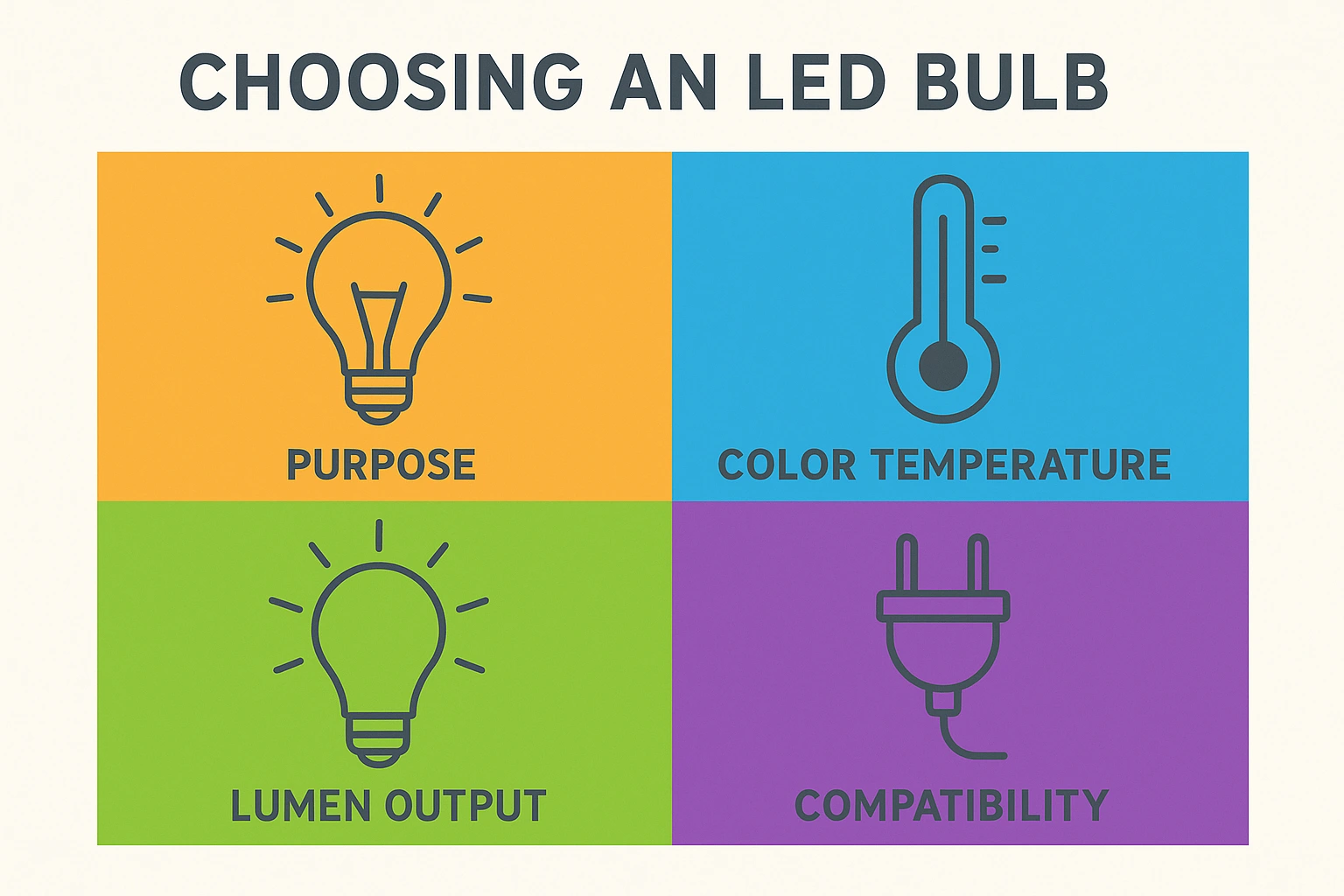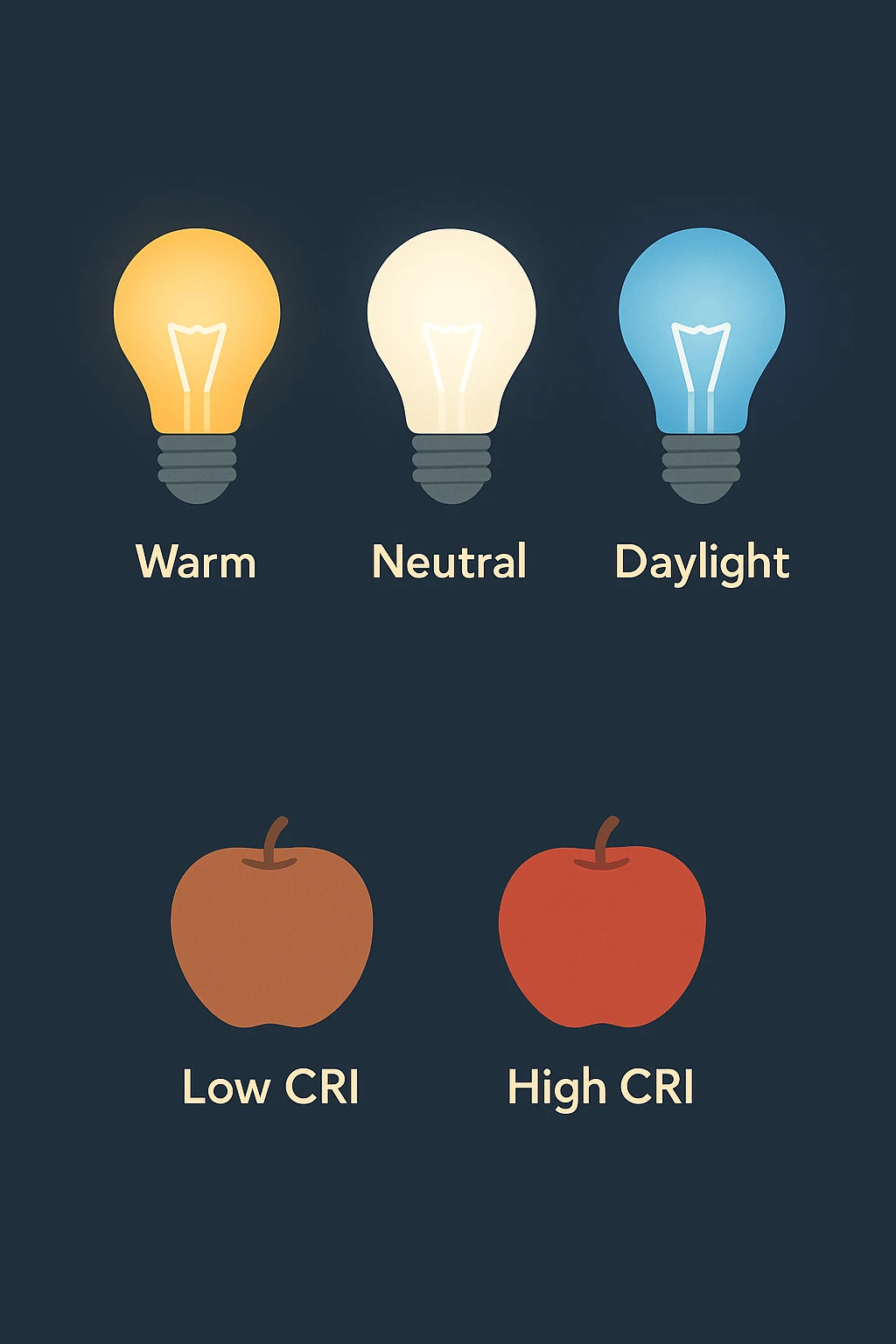How to Choose the Right Bulbs
Choosing the right LED lighting involves several key factors. This guide from LEDHost walks you through all the essentials for smarter, energy-efficient lighting in any setting.

What to Consider
- Purpose (e.g. reading, plant growth, task lighting)
- Lumens and wattage equivalence
- Color temperature (Kelvin) and CRI
- Dimmability and fixture compatibility
- Brand quality and certifications (Energy Star, DLC)
LED Feature Comparison
| Feature | Why It Matters |
|---|---|
| Lumens | Determines brightness, not power consumption |
| Watts | Indicates energy used - lower is better (for the same lumens) |
| Color Temp (K) | 2700K = warm / 4000K = neutral / 6500K = daylight |
| CRI | 90+ shows colors more naturally, important for skin tones and food |
| Certifications | ENERGY STAR, UL, DLC = tested safety and efficiency |
Why LEDs?
Now that you understand the basic decision points, let's break down why LEDs outperform traditional bulbs in nearly every area.
- Use up to 75% less energy than incandescent bulbs
- Last 25,000-50,000 hours on average
- Eco-friendly: no mercury, lower heat, and recyclable
Lumens, Watts & Efficiency
Don't rely on watts to judge brightness - always look at lumens. Here's what matters most:
- Lumens measure brightness; Watts measure power usage
- More lumens per watt (lm/W) means higher efficiency
- Example: 800 lumens = 60W incandescent equals 9W LED
Color Temperature & CRI

Different temperatures create different moods - and CRI determines how true colors appear. Here's a quick breakdown:
- Kelvin scale:
- 2700K = Warm white (cozy, relaxing)
- 4000K = Neutral cool white (kitchens, offices)
- 6500K = Daylight (bright task lighting)
- CRI (Color Rendering Index): 90+ gives more accurate color appearance
- Higher CRI is better for skin tones, food, and plants
Smart Features & Safety
Ready to integrate LEDs into your home? Don't overlook these performance and compatibility tips:
- Dimmable bulbs require compatible dimmers
- Beam angle matters: wide for ambient, narrow for focused lighting
- Look for ENERGY STAR, UL, or DLC certifications
- Avoid flickering strips and cheap bulbs with poor heat dissipation
LEDs for Indoor Growing
If you're growing microgreens, herbs, or houseplants, LED grow lights can outperform even sunlight in the right setup:
- Full-spectrum lights mimic natural sunlight
- PAR (Photosynthetically Active Radiation) is critical for plant growth
- Maintain 12-18" distance from seedlings and microgreens
- Use red + blue blends or dedicated grow LEDs for best results
Quick Reference
| Application | Recommended |
|---|---|
| Bedroom Lamp | 2700K, CRI 90+ |
| Office Desk | 4000-5000K, CRI 80+ |
| Kitchen | 3500-4000K, CRI 80-90 |
| Indoor Plants | Full-spectrum, High PAR |
More in the Tool Zone
Frequently Asked Questions
Ask a Question
All questions are reviewed before publishing.
